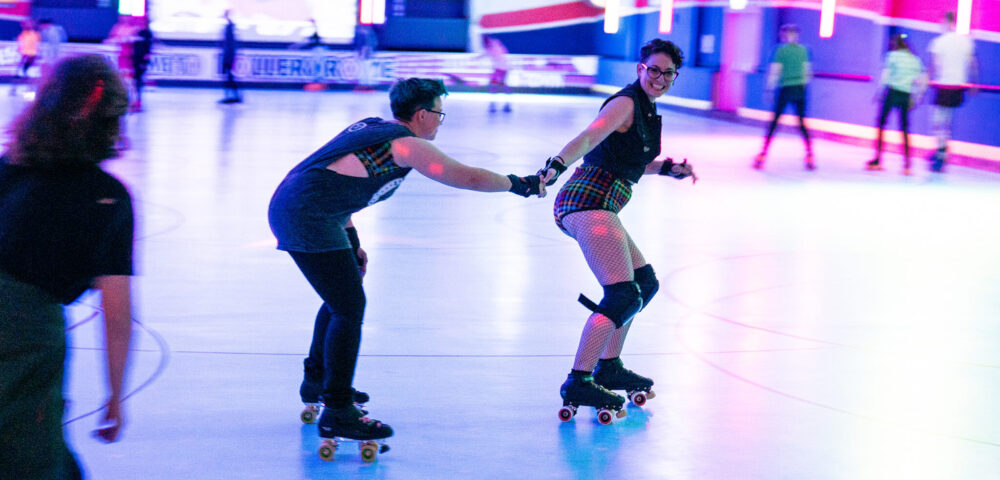Facebook has taken its next steps into the expanding Metaverse concept, with the announcement of a new $50 million investment into research programs that will explore how to develop the digital Metaverse responsibly, and ensure that any related products “are built in a way that’s inclusive and empowering”.
Facebook CEO Mark Zuckerberg went all-in on the Metaverse just recently, in an interview in which he explained that he sees Facebook eventually becoming ‘a Metaverse company’.
This new investment is another step in that direction, while the recently announced promotion of Facebook’s AR/VR chief Andrew Bosworth to the company’s CTO role also points to its continued shift in this path.
As per Facebook:
“As we focus on helping to build the next computing platform, our work across augmented and virtual reality and consumer hardware will deepen that human connection regardless of physical distance and without being tied to devices.”
So what is the Metaverse, exactly, and why does it matter to you and me?
Much like AI before it, ‘metaverse’ is already a hugely misused and misrepresented concept, sometimes deliberately so, in an attempt to cash in on knowledge gaps, other times because there’s no strict definition or parameters, as such, which means that many things could theoretically fit into the metaverse, or a metaverse, as it may be.
To clarify, the actual definition of ‘metaverse’ is:
“A virtual-reality space in which users can interact with a computer-generated environment and other users.”
Virual reality, in this context, doesn’t actually relate to VR in isolation – a metaverse is any simulated environment, in which users can interact, generally through digital avatars, creating a new, responsive environment inside our normal reality.
In this sense, there are many variations of a ‘metaverse’ already. Roblox is, in itself, a metaverse, as is Fortnite, or indeed, any online multiplayer game, providing a platform for user interaction in a simulated space.
But these are smaller elements – the bigger view, or The Metaverse (with a capital ‘M’) is a much more broad-reaching concept, where instead of these smaller, niche virtual communities, there would be a large-scale digital connection platform, which anyone could connect into, at anytime, and conduct a wide range of activities in this space.
So you could still, for example, include Roblox within the bigger Metaverse, but you would connect into that part of it via a larger platform, while you would also be able interact outside of these separate apps within a larger digital sandbox.
So, it’s like Ready Player One, but in real life, providing an escape for people, as well as an immersive entertainment playground, where anybody can be anything that they want.
Which is where digital avatars come in.
You’ve no doubt seen elements of the NFT movement, where people are buying up, for example, Bored Ape digital avatars for crazy prices.

While the animated characters in themselves may not, to outsiders, appear to be worth the millions that people are paying, the visuals act as a sort of digital status symbol, underlining a connection to online culture, while they’re also seen as an investment amid the growth of the burgeoning NFT market.
The next step will also see these characters translated into digital avatars, providing the same prestige and digital cred in the evolving Metaverse concept.

So they essentially form a multi-use art piece, with a view to the expansion of the concept, and with digital ‘skins’ already selling millions in online games, it’s easy to imagine that these one-off art pieces will also prove popular as we move into the next stage.
But then comes the more difficult concept – who hosts that next platform, and builds the actual Metaverse holding ground?
Which is where Facebook’s looking to step in. As noted, the company, with its vast resources, and experience in social connection, is looking to become ‘a Metaverse company’, which, in this context, could also be seen as ‘The Metaverse company’. The overarching view is that the Metaverse will be much like the internet, where there won’t be a central host or platform, as such, but an open framework, that anybody can then build on top of.
How exactly that comes about, though, is less clear, and while there are ideas around open-sourcing the code on the Blockchain, or formulating similar independent support, it still seems like it’s going to come down to a few large facilitators that will host the core elements of the Metaverse base, and will therefore maintain control over at least some of the key aspects.
Which is where Facebook’s looking to get in. Eyeing the next stage of digital connection, Facebook is trying to tie its various projects, including AR and VR development, back into the rising Metaverse concept. Facebook is arguably already leading the way on VR, the future of virtual connection, and if it can get in now and become the facilitator of more key parts of the Metaverse – the big one, which connects everything else – it can position itself as the key platform for the future, and all of the various interactions that may occur in the digital space.
So while it may seem like a vague concept, the impetus is clear – and with VR headset sales rising, and elements life NFTs and other digital connections tools gaining momentum, Facebook is essentially reading the play, and heading to where the puck is going, with an eye to maintaining relevance.
Will that work? Definitely, the potential here is huge – and apps like Snapchat are also working to align with the next shift via the addition of digital clothing and other products that will only exist in the virtual space.
If you want to see where the next big trends are forming, it’s among the youth, and during the pandemic, with screen time being extended more and more as a counter to lockdown boredom, kids are definitely getting more accustomed to socializing with friends in digital form, and communicating their personal style via their on-screen characters.
In ten years’ time, when these youngsters are moving into the next stage, those habitual trends may well be embedded, and aligned with the concurrent rise of technology, you can see why Zuck and Co. may see this as the direction to head in.
As such, this is likely only the first, and minor investment that we’ll see from The Social Network, with a view to owning a chunk of the next connective process.
Note: This article have been indexed to our site. We do not claim ownership or copyright of any of the content above. To see the article at original source Click Here













